
The 23 Best Wineries In Chianti - A Local Guide To Tuscany
Where Do Local Italians Go For The Best Chianti Classico Wine? Our Local Tuscan Expert Guides The Way

- Nathan Heinrich
- Rome, Italy
If you’re searching for the best wineries in Chianti, this is the only article you will ever need on the topic.
While recently planning a trip to the Chianti Classico wine region of Tuscany, I reached out to my dear Italian friend Vera Sarzano, who lives in the heart of this beautiful part of Italy.
For years, Vera worked for several local Chianti Classico wineries as an exclusive guide on private wine tours, before starting her own virtual Italian language coaching company.
In This Article:
Our Local Guide To Chianti
Since I moved to Italy several years ago, Vera has been my personal Italian language coach. She is also a co-host on the top-5 travel podcast I’m Moving To Italy.
Her home, for the past 15 years, is just a short drive from most of the 23 wineries which she recommends on this list.
Being a native Italian, with knowledge of the very best wines in the Chianti region, Vera is a highly sought-after local wine expert and I am grateful she agreed to share her time to help create this local guide to the best wineries of Chianti.

Chianti Wine Region Trivia
This article is designed for those who want to design their own self-guided tour of the best Chianti wineries and taste some of Italy’s finest red wines on their terms.
Wine Lover’s Trivia:
A.) Where is the oldest winery in Italy located?
B.) Which winery is the 2nd oldest winery in the world as well as the 4th oldest business in the world?
C.) Who is the most famous historical person who was also the first agronomist, oenologist, and sommelier from the greater Chianti area?
Continue reading for answers to these questions and more information on some of Italy’s most famous wines.
*Answers at the end of the article.
The 10 Largest & Most Iconic Chianti Classico Wineries
This article is organized by Large, Medium, and Small “Hidden Gem” Wineries

1.) Ricasoli 1141 Winery At Castello di Brolio
Of all the wineries in the Chianti Classico region, there is none more iconic than the Ricasoli 1141 winery at the Castello di Brolio estate.
This winery is Italy’s oldest and its long history makes it the 2nd oldest operational winery in the world (after the Château de Goulaine in France).
It is also the world’s 4th oldest continuously operational business (a Japanese Construction company Kongo Gumi which dates back to the year 578 AD is the oldest).
The Chianti vineyards at Ricasoli 1141 winery cover 240 hectares (approx 600 acres) with an additional 26 hectares (approx 70 acres) planted in olive groves for oil production.
The name “Ricasoli 1141” comes from the Risasoli family who have been making wine in the Chianti Classico area since 1141 in this exact location for nearly 900 years.
The current owner of Castello di Brolio and Ricasoli 1141 Winery is Baron Francesco Ricasoli, he is part of the 32nd generation of the family.
Francesco Ricasoli has been continuing his family’s long history of producing some of the best Chianti wines since taking over in 1993.
The sprawling estate, which covers approx 3,000 acres, includes a world-class restaurant, villas for vacation rentals, the medieval Brolio Castle dating back to the Middle Ages, and many events throughout the year – including olive oil tasting.
No visit to the rolling hills of the Chianti wine region would be complete without a visit to Italy’s oldest and most impressive winery and the birthplace of Chianti Classico wine.
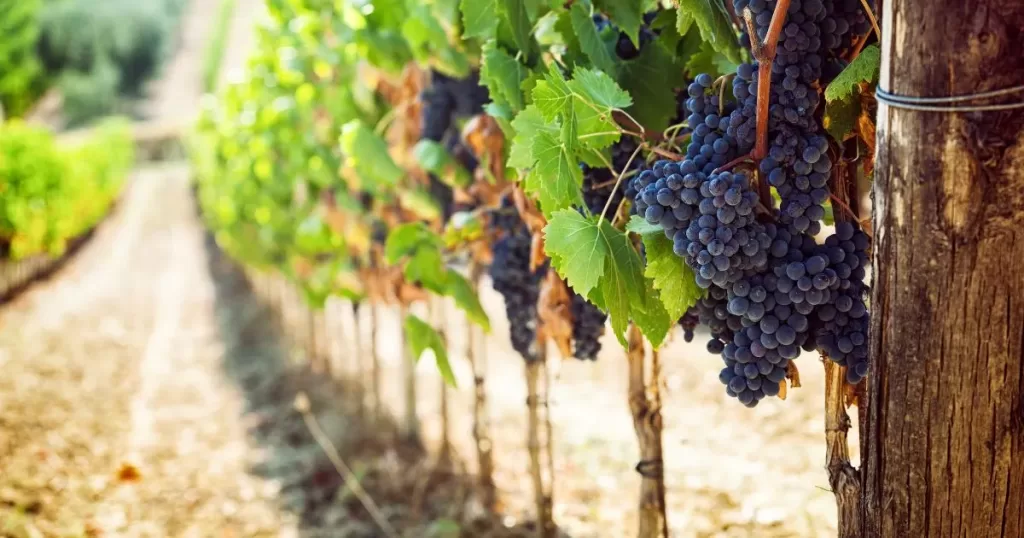
2.) Marchesi Antinori
For 26 generations, since 1385, the Antinori family has been producing wine in the Chianti wine region.
Any visit to the Chianti Classico wine region should include this winery which is the 2nd oldest in the area.
Antinori Winery is a member of the “Arte Fiorentina dei Vinattieri”, the prestigious Florentine Winemakers’ Guild.
The Antorini Family owns 7 wine estates in Tuscany and one in Umbria, which are all truly beautiful and each deserving of a visit.

3.) Marchesi Frescobaldi
With more than 700 years spanning 30 generations, the Marchesi de’Frescobaldi has been making wine history in Italy.
Besides exclusive restaurants in Florence and London, the winery now has 11 unique estates which produce some of the region’s most sought-after wines.
Many of the Frescobaldi estates have native forests established on their land.
The beautiful estates of Castello Nipozzano and Castello Pomino were the very first in Tuscany to be awarded the PEFC certification (‘Programme for the Endorsement of Forest Certification’) which certifies the sustainable management of Tuscan forests.
The Frescobaldi Family wine empire represents one of the most impressive in all of Italy.
If you are planning a visit to Tuscany, some of the 11 elegant wine estates in the Frescobaldi portfolio are certainly worth exploring.
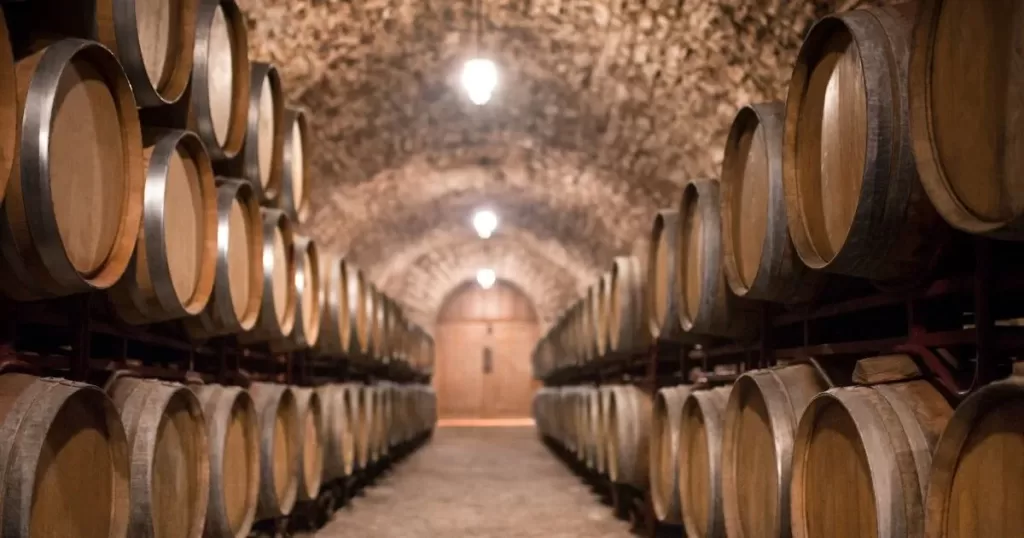
4.) Banfi
In 1978, two Italian-American brothers, John and Harry Mariani, founded a winery in the Chianti Classico wine region.
With the expert help of one of Italy’s most celebrated enologists, Ezio Rivella, Banfi Winery has been built into one of Chianti’s most impressive wineries.
Another proud moment for the brothers and their families was when they acquired the historic Bruzzone winery in Piedmont.
The Banfi Piemonte location specializes in the production of impressive sparkling wines which can be tasted and purchased at the Chianti location along with their impressive collection of Chianti Classico riserva blends.
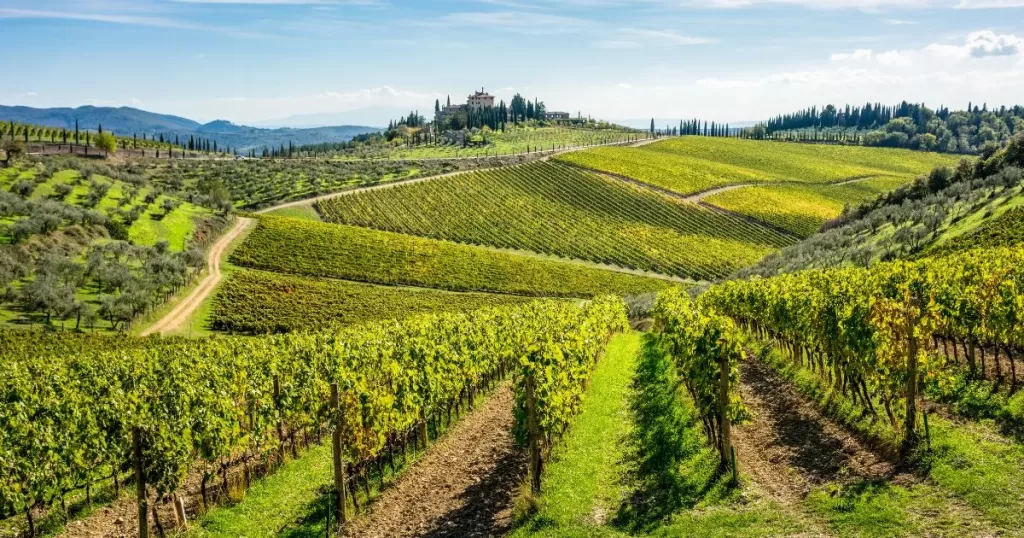
5.) Castello di Ama
Castello di Ama is yet another fantastic Chianti winery with a rich history involving a castle.
The village of Ama has Etruscan origins which predate the Holy Roman Empire.
Although the castle was destroyed in the fifteenth century, during the Aragonese invasions in the Chianti area, the current headquarters of the Castello Winery were rebuilt from the stones of the original castle, during the 1700s.
Add this fantastic winery to your Tuscan wine tour for some of the region’s best Chianti Classicos.
6.) Fonterutoli Mazzei
If you are interested in a true “Wine Resort” then Fonterutoli Mazzei might be just the place for you. The guest rooms and suites at this winery are so lovely you won’t ever want to leave.
The Mazzei family has owned Castello di Fonterutoli since 1435 – that’s nearly 600 years of experience making their incredible full-bodied wine in the Chianti Classico area.
This winery leads the pack when it comes to an environmentally conscious wine-making process and is certainly one you should visit on your winery tour of the Chianti region.
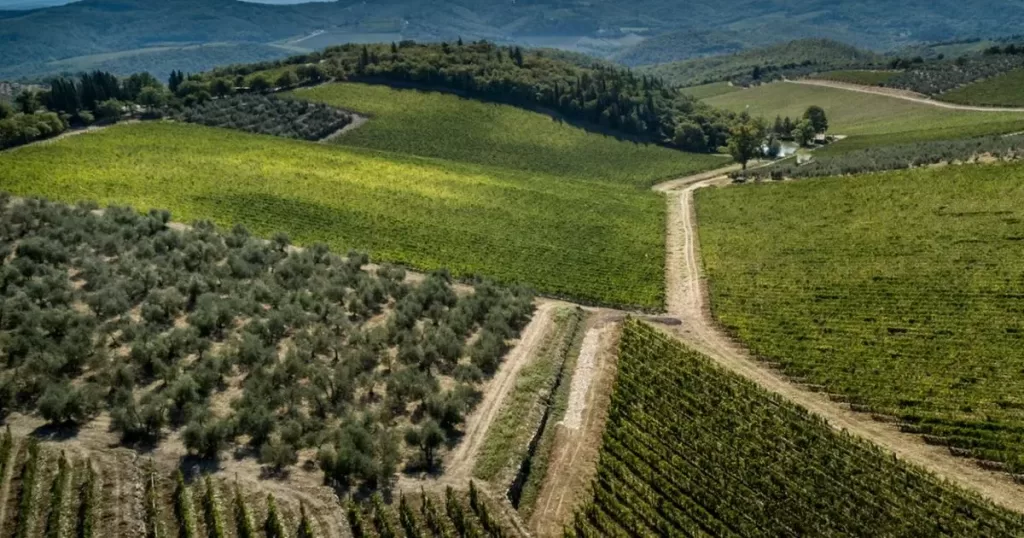
7.) Dievole
The Dievole winery is one of the best wineries in the Tuscan countryside.
If you’re looking for a catered vineyard picnic with some good food and wine, olive oil tasting from trees in the estate, wine tasting, and vineyard visits to some of the most unique locations in the Chianti Classico region, then a visit to Dievole is in order.
Dievole’s restaurant Ristorante Novecento, which is located on the ground floor of the winery, was established in 1990 to commemorate the estate’s 900th anniversary.
During the summer season, guests can enjoy their meals in the historic tiled courtyard surrounded by the fragrant rose garden.
While in the fall and winter months dining is enjoyed inside the 18th-century villa.
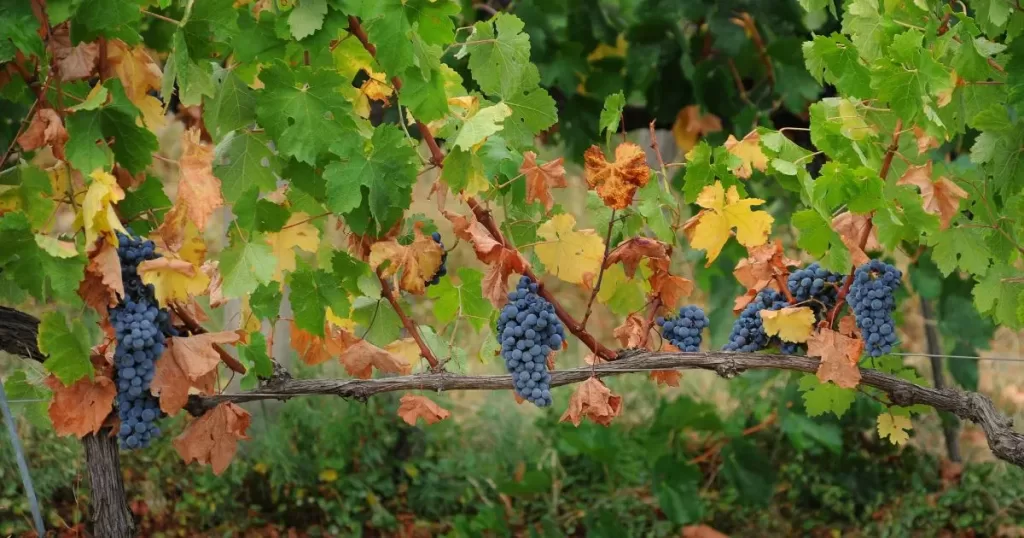
8.) San Felice
Borgo San Felice is so much more than a fabulous Chianti Classico winery.
This completely unique location is actually an entire medieval village including a chapel, historical cellars, a wellness center, and dozens of villas that have been converted into private vacation residences.
The winery is surrounded by hectares of vineyards, bike trails, and the most beautiful hills in the Chianti region.
The perfect location for a destination wedding, small groups, or a 100-guest special retreat.
Many feel that a stay at Borgo San Felice is the best way to unwind and soak up the Chianti countryside.
Of all the locations on our list of the 10 biggest and best Chianti Classico fine wine producers, this one is a total stand-out from all the rest – not to be missed.
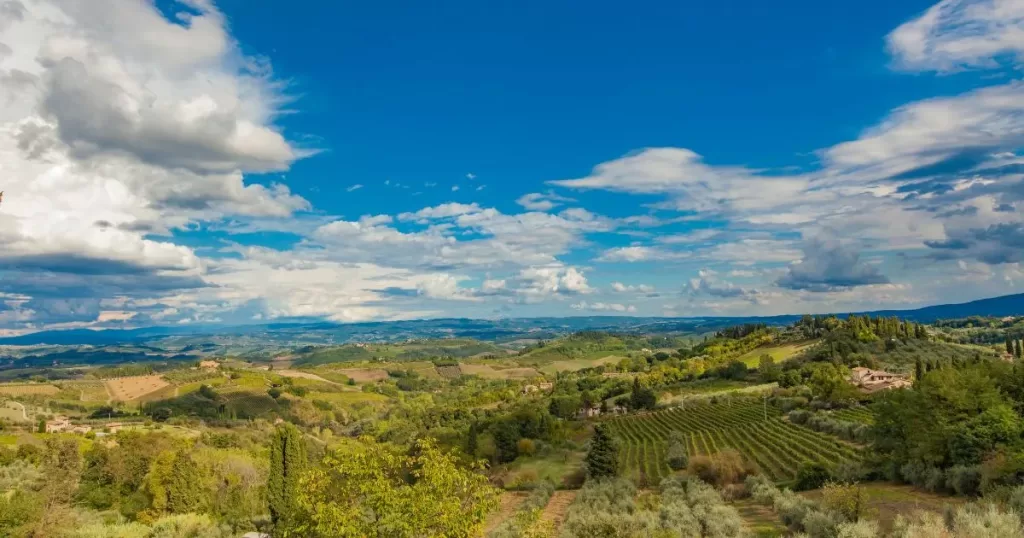
9.) Tolaini
Of all the wineries on this list of 23 Chianti Classico wineries, Tolaini is the only one owned and operated by a woman.
Lia Tolaini took over this beautiful winery when her father, Pierluigi Tolaini, passed away in 2020.
Not only does Lia Tolaini produce wine but she also owns a major wine import company in New York, Banville Wine Merchants.
While you can buy Tolaini wines in the USA, Canada, and locations worldwide, a cellar visit to the Chianti region is the best way to taste wines from this very special winery.
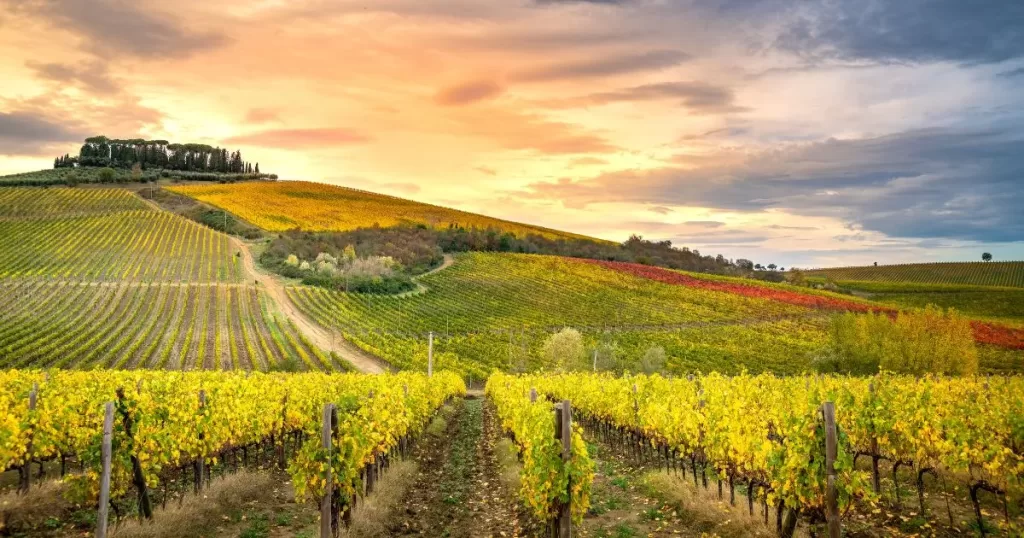
10.) Vallepicciola
Just 10 minutes from the famous Chianti city of Siena is this fabulous 107-hectares (264-acre) winery.
Our local expert, Vera Sarzano, called this particular winery a “hidden gem in the category of larger Chianti Classico wineries.
Not only are the wine cellar and tasting room at this beautiful winery stunning, but the unique soil type, the elevation, the special rootstock, and the exposure contribute to wine production that is unmatched.
Although this is one of the smallest in the category of larger wineries in the Chianti region the wines produced at Vallepicciola are anything but small.
Be sure to add Vallepicciola to your list of Chianti Classico winery visits.
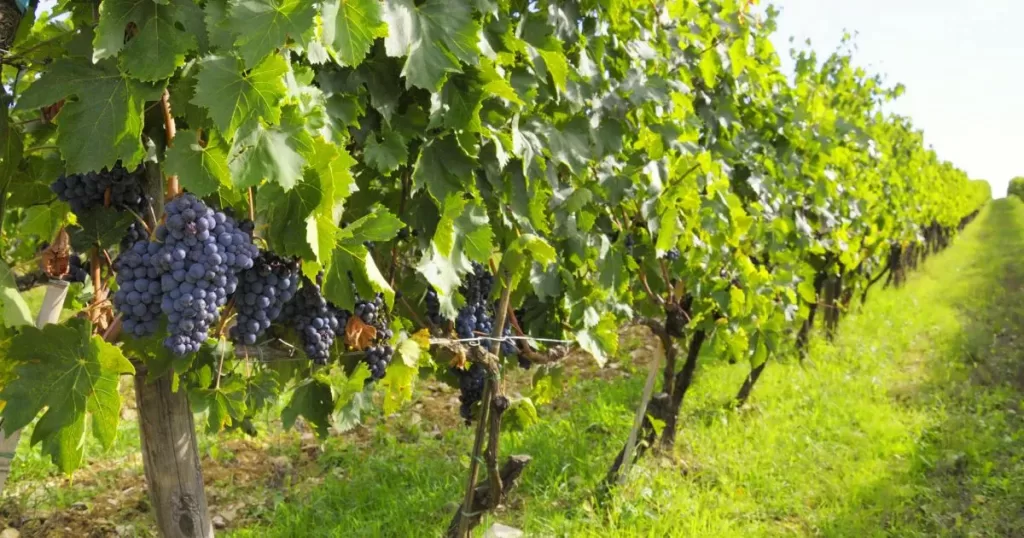
READ MORE:
11.) Fattoria di Montemaggio
Fattoria di Montemaggio is a family-owned organic winery well-known for its excellent wines – definitely worth an in-depth tour and wine-tasting excursion.
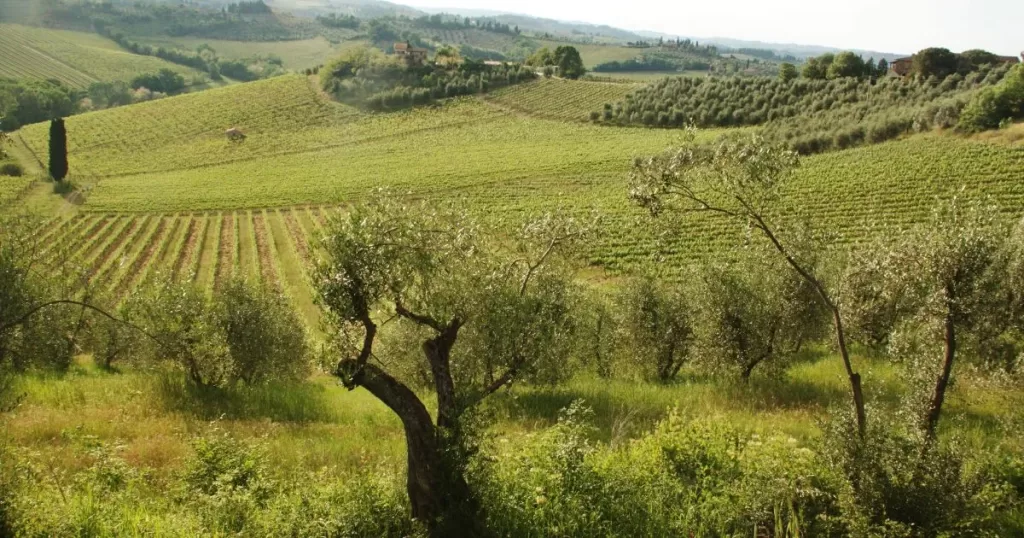
12.) Fattoria di Fèlsina
Fattoria di Fèlsina is a very special winery located in the Chianti Classico region of Castelnuovo.
This boutique winery is known for its Chianti Classico Riserva, Vigneto Rancia, and Sangiovese wines.
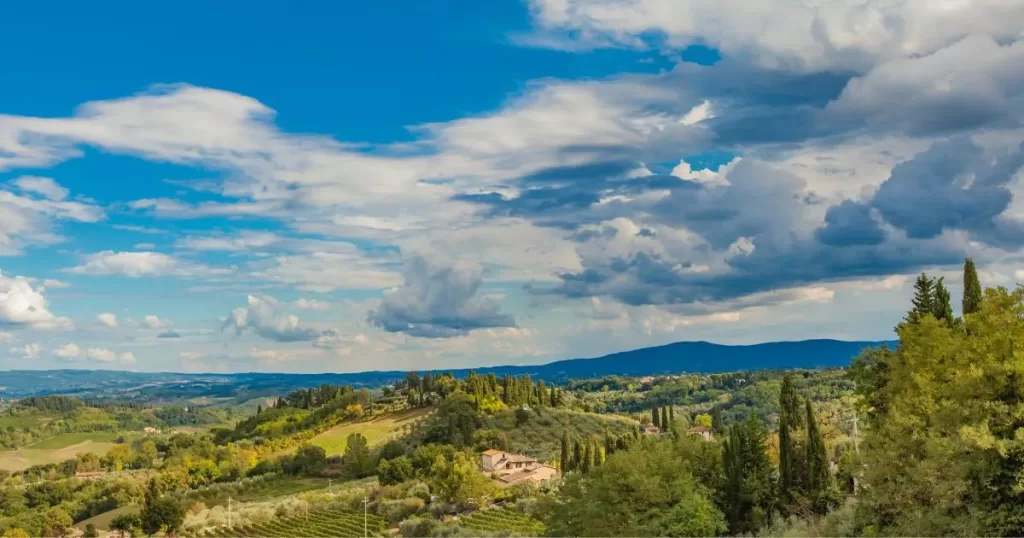
13.) Castello di Verrazzano
Castello di Verrazzano is a romantic and rugged winery in the hills of the Chianti Region which is well worth a visit.
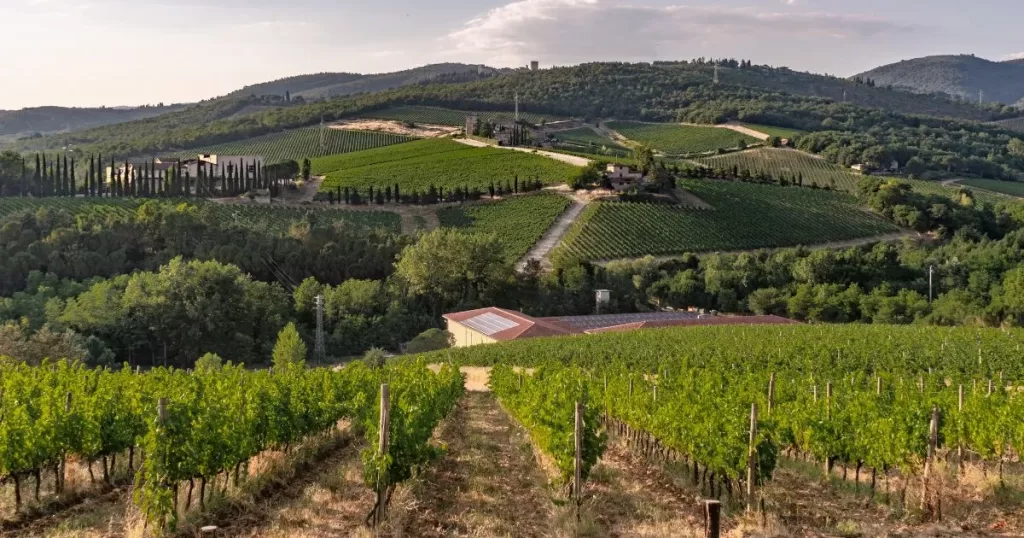
14.) Castello di Bossi
The castle with its beautiful vineyards and delicious wines at Castello di Bossi winery, has wonderful guest suites and a private swimming pool with views of Siena.
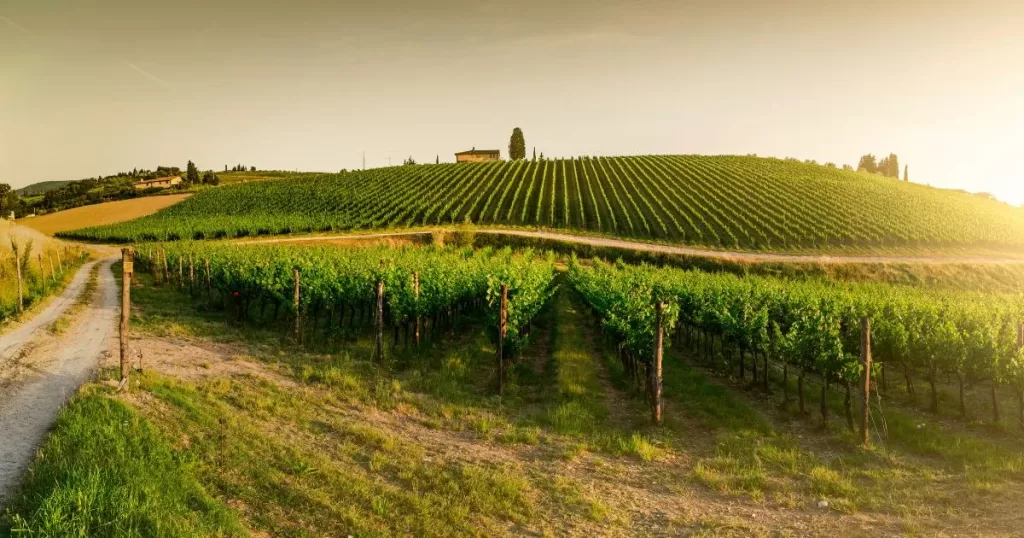
15.) Lamole di Lamole
“Lamole di Lamole” is a small family winery.
If you’re looking for a lovely quiet spot with delicious food and wine during your tour of the Chianti Region, this just might be the place for you.

16.) Azienda Agraria Miscianello
Miscianello is an agriturismo that produces wine and olive oil.
The pool, guest rooms, and estate are a fantastic spot to unwind just a 15 min drive from Siena.
The hosts are friendly and welcoming and guests love the food and wine served in a beautiful setting surrounded by vineyards and lemon trees.
https://www.tripadvisor.com/Azienda Agraria Miscianello

17.) Arceno
Arceno Winery is a boutique wine producer in Chianti Classico whose wines can be tasted in Tuscany as well as Napa Valley in California.
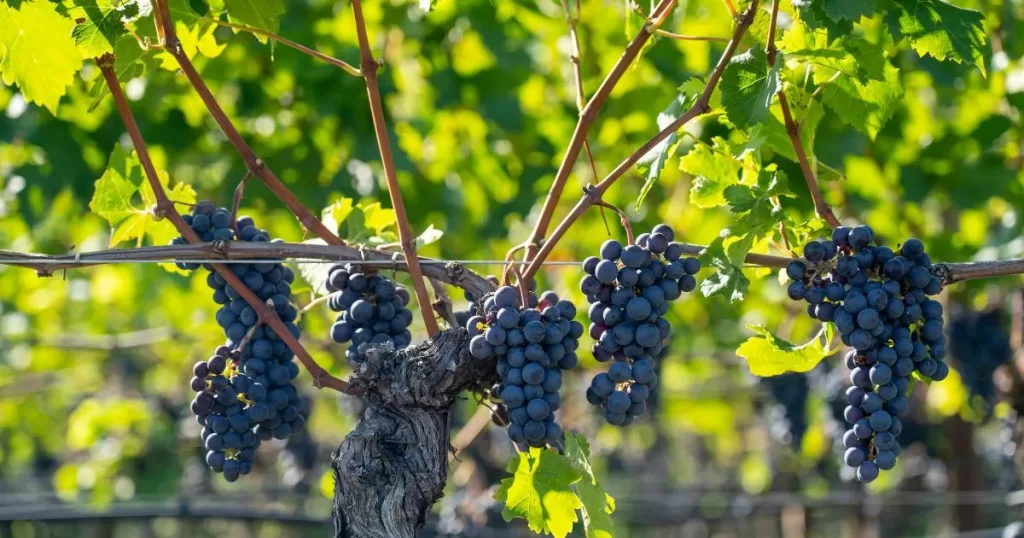
6 Family-Owned "Hidden Gem" Chianti Classico Wineries
18.) Scheggiolla
Podere Scheggiolla is the first on our list of small family-owned “hidden gem” wineries that tourists rarely visit – but you should consider visiting.
Located on the top of the hill in the community of Castelnuovo Berardenga in Chianti, Tuscany.

19.) La Lama
La Lama Winery is another excellent family-owned producer of wine and olive oil in the Chianti hills.
Some of the wines you should consider buying from La Lama are – Chianti Classico Sottolaia, Chianti Classico Riserva Terzo Movimento, and I.G.T. Caliptra.
La Lama uses cutting-edge processing techniques in their winemaking and olive oil production. These techniques are carefully managed by the Campani family.
Duccio Campani, along with his hard-working wife Tiziana and their daughter Sarah, are passionate winemakers and olive oil producers.
Our local Chianti Classico wine expert, Vera Sarzano, lives just a few minutes away from this charming winery and she happens to love the wine and olive oil produced by this lovely little winery.

20.) Pacina
Pācina Winery not only produces some of the Chianti Region’s best organic wine, but they are also one of the most beautiful locations in all of Tuscany.
Check out their website to see the gorgeous images of the 65-hectare estate.
This lovely family-owned farm is renowned for its quality wines and commitment to sustainability.
Be sure to add this location to your tour of Tuscany.

21.) San Giusto a Rentennano
The Martini Family who owns and operates this Chianti Classico winery are well-known for their fabulous local wines.
This wonderful family-owned winemaker is committed to producing some of the best wines from robust local grapes.
Be sure to add this winery to your tour of the Chianti wine region.
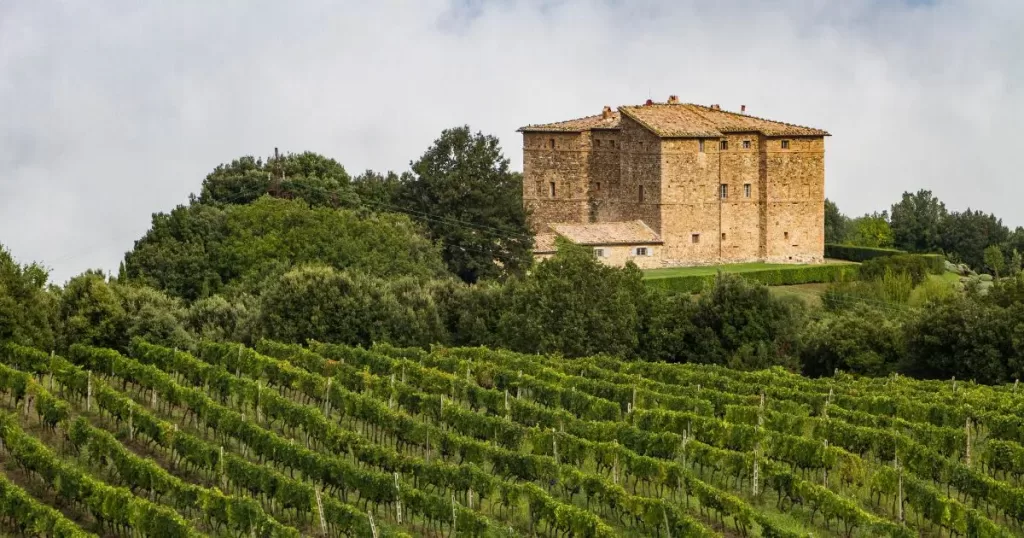
22.) Podere Le Trosce
You will not find better olive oil or wine anywhere in the Chianti area.
This family-owned wine and olive oil estate is so small they don’t even have a website.
Click on the link below to visit their Instagram page.
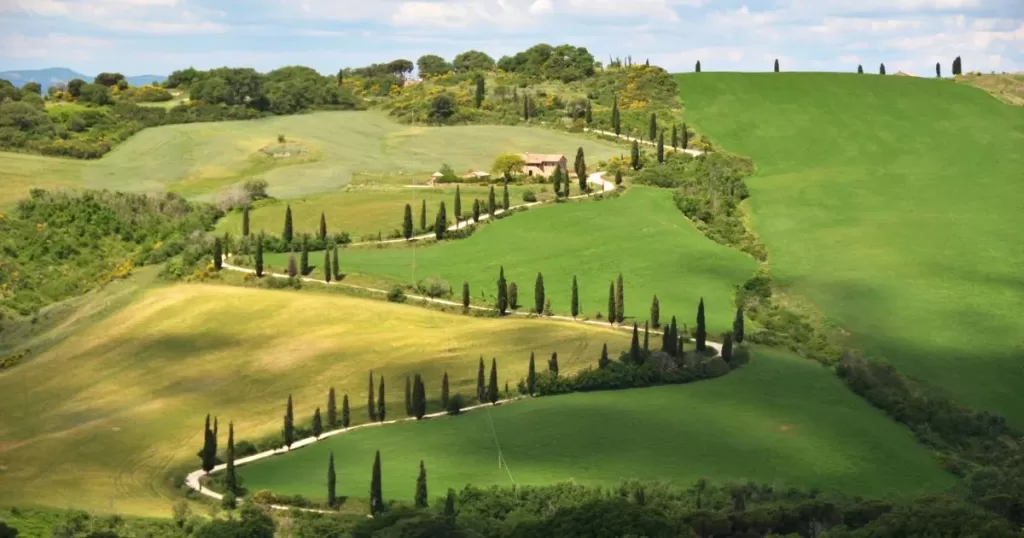
23.) Sant'Agnese Farm
This family-owned and operated winery is located just outside the town of Castellina in Chianti.
The name of this boutique family farm comes from the local forest “Bosco Sant’Agnese”.
Not only can you taste some of the region’s most boutique wines here, but you can also take part in a cooking class taught by a member of the family. Be sure to add this beautiful location to your tour of Chianti.
READ MORE:
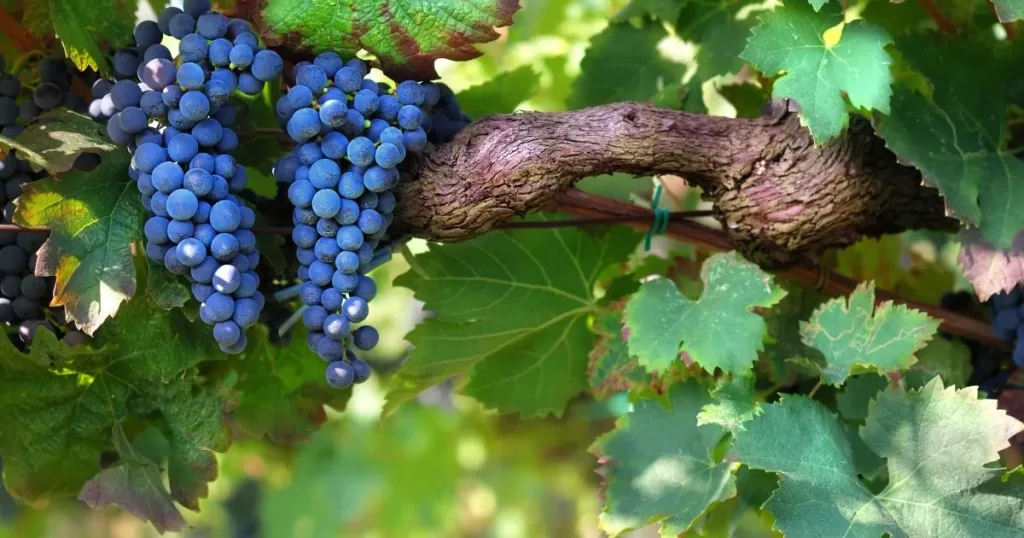
A Brief History Of The Chianti Area
Modern-day Chianti is dotted with elegant wine estates and lovely groves of olive trees but this region was not always such a peaceful and picturesque location.
For thousands of years, this area was populated by warring kingdoms that constantly attacked one another tipping the balance of power back and forth from one century to the next.
Despite the constant attempts to topple each other’s power, ancient Etruscans and Italians were also busy honing their skills as farmers and winemakers.
The Etruscan people were the first to make wine in Tuscany during the 5th century before Christ.
However, it wasn’t until about 1500 years later that wine-making began to evolve into the art form that it is today.
Where Did The Name "Chianti" Come From?
The first recorded use of the term “Clanti” (origin of the modern-day Italian word “Chianti”), attributed to the powerful “Clante” family, was in the 11th century, and the name was eventually used to describe the area that includes Florence, Arezzo, Siena, and Pisa.
In the 15th century, the Sangiovese grape variety was first used by local winemakers to make a local red wine that gained popularity with each passing generation.
In 1716, Cosimo III de Medici, the grand duke of Tuscany, published the first book dedicated to winemaking.
In this book, he declared that the Chianti region was the only area suitable for making the early Chianti type of wine. Cosimo was hundreds of years ahead of his time by creating a designated area for wine in Italy – like the modern-day DOCG.
The Father Of Chianti
In the mid-1800s Bettino Ricasoli, a true Renaissance man involved in the political Unification of Italy, retired from politics to focus on agriculture.
Ricasoli studied soil agriculture and made it a true science and he developed a unique understanding of the local “terroir”.
He developed different blends of 80% Sangiovese and 20% of other local varietals until he developed what he considered the “best blend” for the area.
Bettino called this unique mix of grape varietals his “formula”. He was also among the first to age wines in wooden barrels in Italy.
His techniques started to be followed by other local winemakers and his methods are what are still used today to create modern Chianti Classico.
In his day this wine was called “Chianti” or “red wine” from the area.
In the 1900s a consortium was established to organize the Chianti wine region.
DOCG Classification
In 1984 the DOCG classification was added by the Italian government to certify the wine from this unique wine region of Italy.
Winemakers must follow all the DOCG rules for blending and handling Chianti Classico wines in order to gain the coveted certification.
There are now over 300 wineries that are part of the Chianti Classico DOCG area. When shopping for wine in a shop or retailer, the best Chianti Classico wines will always have the famous Black Rooster on the label.
A secret best known by locals, like my friend Vera Sarzano, is that some of the best little family-owned wineries choose not to pay for the expensive Chianti DOCG certification label.
But their wines are no less fabulous than the most famous Chianti Classico producers.
Conclusion
The world-famous Chianti wine region with its manicured vineyards edged by cypress trees and its stone churches and Etruscan villas is one of the world’s best locations for wine lovers.
One of the best things about the Chianti Classico region, with its many different wineries that have been producing some of Italy’s best wines for a very long time, is that you get an opportunity to actually meet the families that produce the wine and olive oil.
Especially at the 6 “hidden gem” family-owned wineries included in this article, visitors are able to meet the people whose hearts and souls are poured into the bottles of wine they make.
That’s a rare experience, as you well know if you are a regular visitor to wineries in places like Napa Valley.
Although Italy has many different wine regions traversing the peninsula and islands of the country, the Chianti Wine region is the oldest.
Chianti Has Something For Everyone
Whether you prefer Vin Santo, Chianti Classico Gran Selezione made from 100% Sangiovese grapes, this very special wine region has something for everyone.
If you don’t like Chianti Classico wines or want to try something different, most wineries in the area also produce amazing reds, whites, roses, and grappa!
Even though I live in Italy, I’m not a wine connoisseur or expert – yet.
But even if you’re not a wine snob, the Chianti area has plenty to offer like cooking classes in a 16th century villa or learning how to turn olives into (liquid gold) olive oil.
The best thing you can do, especially if you’ve never visited, is to take this list of the Best Wineries in Chianti and eat and drink your way across the region at your own pace.
You will return home a changed person and before you know it, you’ll be planning your next visit to Italy’s oldest wine region.
I hope this article has helped you to plan your next Tuscan excursion.
As an American with dual Italian citizenship, I love learning about Italy from locals like Vera because they are the best guides to all things Italian.
Salute!
Wine Lover’s Trivia Answers:
A.) The oldest winery in Italy is located in: The Chianti Classico region – the Ricasoli 1141 Winery
B.) The 2nd oldest winery and the 4th oldest business in the world: Ricasoli 1141 Winery at Castello di Brolio
C.) The most famous historical person who was also the first agronomist, oenologist, and sommelier from the greater Chianti area: Leonardo da Vinci who was born in the Comune of Vinci in the village of Anchiano
Official Websites For All Wineries in the Chianti Classico Wine Region:

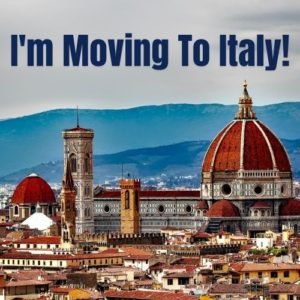
Dreaming of Moving to Italy?🇮🇹 - Get this FREE podcast & be INSPIRED by someone who moved from New York to Italy in 2020!
*By signing up for this Podcast you’ll also be joining our mailing list through which we will keep you up to date on all things Italian! We never sell your information and you can easily unsubscribe at any time.
Share This Post
Author Info:

Nathan Heinrich
Nathan is a writer, designer & horticulturist. He is the founder and Editor-in-Chief of "All Roads Lead to Italy" Magazine & host of the Top-10 Travel Podcast, "I'm Moving To Italy!". Nathan was born and raised in a 6th generation farming family in Northern California, he is currently, a dual Italian citizen, living in the Prosecco Valley of Northern Italy, near Venice.


